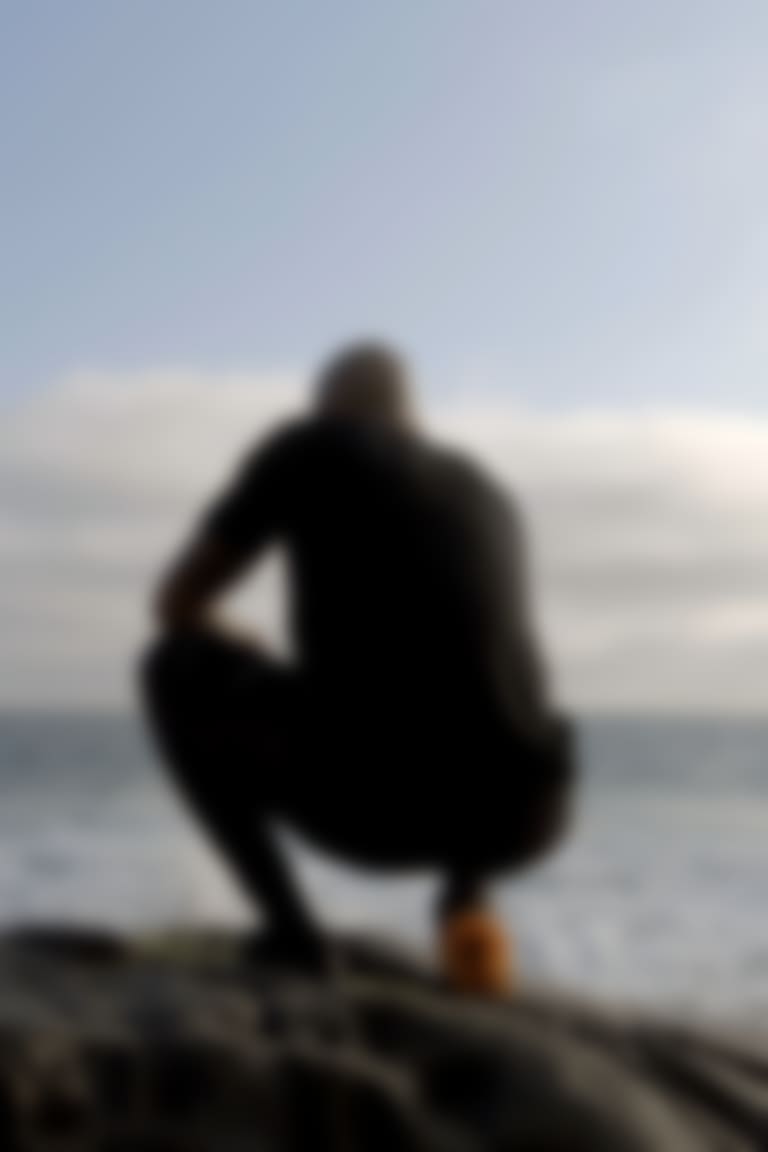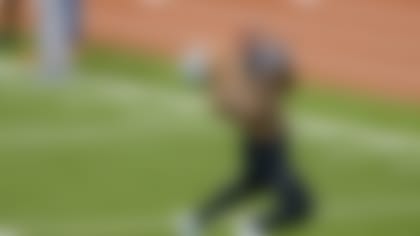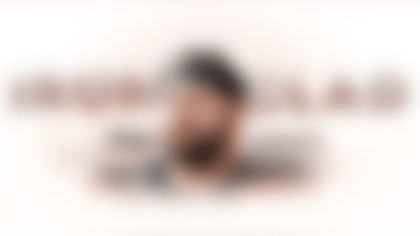Former Rams wide receiver Stedman Bailey survived a volley of bullets -- and now, he's stopping at nothing to get back to the NFL
By Jeffri Chadiha | Published May 7, 2018
MALIBU, Calif. -- Geno Smith closed his eyes and prayed for something positive before taking his next step inside Aventura Hospital and Medical Center outside Miami two and a half years ago. As soon as he edged into that crowded patient room, he saw Stedman Bailey lying prone on a stiff bed, surrounded by a group of loved ones that included Bailey's grandmother and Kayvon Webster, a close friend who played cornerback for the Denver Broncos at the time. An unknown assailant had shot Bailey twice in the head just days earlier, spraying 30 bullets into a rented SUV where four other people, including two children, had been discussing dinner plans. This was the first opportunity for Smith to assess the damage for himself.
Bailey laid motionless. A thick, white bandage covered his skull, and his eyes were swollen and closed, as if someone had just beaten him relentlessly with a baseball bat. There wasn't even the option of Bailey holding a conversation, as a tube inserted into his throat during his seven-hour surgery had damaged his vocal cords. "We would just tell him that if he could hear us, just wiggle a thumb," Webster said.
A multitude of nightmarish thoughts ran through Smith's mind as he stood over Bailey, including the possibility that his longtime pal might never walk again. They had grown up together in Miami, had known each other since junior high school and had become stars at West Virginia, with Bailey setting records as a wide receiver (including single-season marks for receiving yards and touchdown receptions and the career mark for touchdown catches) catching passes from Smith, the all-conference quarterback. When they entered the NFL in 2013 -- Smith was the New York Jets' second-round pick, while Bailey went in the third round to the St. Louis Rams -- they never imagined a day when the gun violence that too often plagued parts of Miami would catch up to them.
Smith kept pondering how such a tragedy could happen when Bailey's eyes slowly opened. As Bailey raised his right hand, Smith moved closer, leaning over to glean what his friend was trying to do. Bailey continued reaching his hand forward until it clutched Smith's right hand. What is he trying to tell me? Smith thought.
The next thing Smith knew, his buddy was playfully tugging at Smith's fingers until Smith instinctively followed that lead.
"He gave me our secret handshake," Smith said. "We've had one for a long time. And when I saw that, despite everything that was going on, it was a big sign. I knew he was going to be OK."
Bailey nearly lost his life on Nov. 24, 2015. What he's mostly thought about since that day is how he can save his career. In early April, as he walked his five-month-old German shepherd, King, across a narrow beach in Point Mugu State Park, Bailey talked constantly about returning to the NFL. He started going to that spot in Malibu months ago, after he missed church one Sunday morning and a friend suggested that beach as another option for reflection. It's been a sacred sanctuary ever since, a private space where Bailey can meditate while keeping his eyes on the prize he's coveted ever since he landed in that Miami hospital room.
At 27 years old, Bailey's mindset couldn't be any clearer: Somebody stole his dream from him, and he's determined to get it back. Even when doctors cringed at the notion, he told himself he was going to play football again, and that's exactly what he plans on doing.
"It's important to play (again) because it's something that I worked my whole life for, to make it to the big leagues," Bailey said. "I got a chance to taste it, to play for three years, and then a very unfortunate incident happened. But, just based off the odds that I've been able to overcome over these last couple years, it's been nothing short of a miracle. If it's healthy for me to go out there and play, then I'm definitely all in for it."
The "if" that Bailey mentioned is a huge one. It's the only question he knows he can't control in this process, the one that might lead to a team doctor deciding he's already played his last football game. Even though Bailey didn't suffer any brain damage in that shooting, head trauma has been a controversial topic in the NFL for nearly two decades. For Bailey to have a chance at returning to the league, somebody with a medical degree must believe he's not placing himself in harm's way.
Bailey already feels confident that he's taken every possible precaution -- he had a titanium plate inserted into his skull last October to protect his brain -- and he's never shown any issues related to head trauma. Dr. Jeffrey Kutcher, a Michigan-based neurologist who works as a consultant with the NFL Players Association, added that people too often misconstrue the fact that concussions involve the brain and not the skull.
"One of the most important aspects of this case is that the bullet didn't touch his brain," said Kutcher, who has not met Bailey. "Everything being equal, his brain came out OK, so there shouldn't be any additional risk of him playing football now than he had before the shooting. As long as the structure of his skull is intact, he should be fine."
Bailey also has pushed himself into spectacular shape. After losing nearly 30 pounds following the shooting, he's back to carrying 190 pounds on his 5-foot-10 frame, just four pounds shy of his playing weight in his last season with the Rams. Bailey works out relentlessly with former Rams teammates these days, and he participated in two college pro days in March (at Marshall and West Virginia). Essentially, there isn't anything he won't do to earn another opportunity in the league.
That combination of passion and potential has impressed plenty of people. After watching Bailey run sharp routes and display strong hands at West Virginia's pro day, Mountaineers head coach Dana Holgorsen said, "He looks like the same old Stedman to me. We called him 'Steady B' because that's what he was -- steady. He still runs those smooth routes. He still has those same great hands. I would think somebody would give him a shot because he looks the same way he always has."
Added an AFC scout in attendance: "You wanted to see if he could still do the key stuff -- running the routes, catching the ball, (maintaining) his stamina, all the things you have to know before guys get to camp and start hitting. But he looked good to me. He didn't blow the 40 out of the water (this scout clocked Bailey at 4.62 seconds), but he ran well. I told our people that he had a good workout. He definitely did enough to stir up a conversation with some teams. After that, it's all about how people feel about the risk."
The other thing that caught the scout's eye at West Virginia's pro day was Bailey's behavior. One minute, he was off to the side, telling a running back how to tighten his routes coming out of the backfield. The next, Bailey was teaching a receiver how to catch the ball in a manner that prevented defenders from reaching in and knocking it out. He even made a point of continually boosting the confidence of the young Division II quarterback throwing him passes.
Bailey didn't hide his enthusiasm for being back in a place that enabled him to reach the pinnacle -- to this point -- of his football dreams.
"I'm a religious person, so I will ask God why would something like that happen to me?" Bailey said. "I'm not a gangbanger. You just have to understand that certain things happen in life that are out of our control. But the way you respond to it pretty much determines what kind of person you are. So I've just always been determined to just fight through all the adversity. I'm moving on and just looking forward to what's to come."
The people who know Bailey say it's not surprising that he's not bitter about what happened, or that he's so intent on returning to the NFL. A positive attitude and a single-minded nature are what earned him a spot in pro football in the first place. Growing up in Miramar, Florida, a suburb of Miami, he learned the value of being tough at an early age. He also never relented when things weren't going his way.
When the marquee in-state programs didn't want him -- Miami, Florida State and Florida all ignored him coming out of Miramar High -- Bailey set his sights on West Virginia. He even convinced Smith to come along with him, even though the four-star QB recruit was seriously thinking about attending Alabama. One day after high school practice, the team's coach told Smith and Bailey that a local radio station wanted to interview them to see about their college choices. When Smith followed Bailey to the microphone, the host informed him that Bailey had said both players were committing to the Mountaineers. It says something about Bailey's persuasiveness that Smith actually decided to attend West Virginia.
"I think Stedman really wanted me to go with him," Smith said.
What Bailey understood was that his chances for prosperity would improve greatly if he had his quarterback along for the ride. He wound up amassing 210 career receptions, 3,218 yards and 41 scores, then declared for the 2013 NFL Draft after his 25-touchdown junior season.
Bailey spent his first few years in the NFL trying to find a rhythm on some mediocre teams. In those three seasons, he totaled 59 receptions for 843 yards and scored four total touchdowns. Like a lot of Rams players in those days, he struggled to generate big numbers in the conservative offense favored by then-head coach Jeff Fisher. Bailey also was suspended twice -- he missed the first two games of the 2014 season for violating the league's policy on performance-enhancing substances, while a positive test for marijuana resulted in a four-game suspension in 2015. Still, Bailey felt optimistic about his future in the league.
"He was on track to being a good, reliable wide receiver in the NFL, similar to what he was at West Virginia," said Rams general manager Les Snead. "He was one of those guys who you call quarterback-friendly. He ran good routes. He had strong hands. Quarterbacks liked throwing the ball to him because he was usually going to be open."
Added former Rams and West Virginia teammate Tavon Austin: "He was making some plays. He had his slip-ups and he got humbled for that, but he was making his mark."
Bailey actually was serving his marijuana-related suspension when he was in Miami preparing for Thanksgiving. After renting a Chevy Tahoe that would be used for the drive to Atlanta to see his mother, he found himself sitting in front of a house in Miami Gardens where his friend, Terrance Gourdine, was inside changing clothes. Bailey sat in the passenger seat of the vehicle. His cousin, Antwan Reeves, was in the back with Reeves' 10-year-old son and 6-year-old daughter. The rear hatch of the vehicle was open.
Bailey was posting pictures on Snapchat when an unidentified vehicle pulled behind them at around 8:45 p.m. Gunfire filled the air seconds later, with 30 rounds ripping through the back of the SUV. Reeves instinctively jumped to cover his children, as he felt shots piercing his shoulder, lower back and legs. One bullet caught Bailey on the back of his skull, behind his right ear, and exited just above his right eyebrow. Bailey doesn't know where the other bullet struck, but the first shot left him slumped across the front seat of the Tahoe.
"I got out of the car and opened the door, and he was just lying there unconscious," Reeves said. "I hit him in the chest to wake him up. This shows you how strong he is -- even though he'd been shot, he still wanted to look in the mirror and see his face."
YOU JUST HAVE TO UNDERSTAND THAT CERTAIN THINGS HAPPEN IN LIFE THAT ARE OUT OF OUR CONTROL. BUT THE WAY YOU RESPOND TO IT PRETTY MUCH DETERMINES WHAT KIND OF PERSON YOU ARE. Stedman Bailey
Said Bailey: "I was hit twice and my cousin was hit 11 times. We both remained coherent through the whole time, which I can't say nothing but God had to be there with us. I didn't feel any pain, so I was really shocked when my cousin told me that I had been shot in the head. I'm sitting in the front seat not feeling anything. I'm just looking around, kind of dazed, but I remember being able to talk to my cousin and my two little cousins. They're panicking, going crazy, and I'm just trying to keep them calm and thinking, Let's do whatever we've got to do to make it to the hospital."
Gourdine raced to the car after hearing the gunfire and drove through every red light, pushing the SUV up to 100 mph, in order to reach nearby Jackson North Medical Center in roughly 10 minutes. Since there was no trauma unit at the facility, the group was transported to Aventura, which was about 10 minutes away, for treatment. Bailey was so clear-headed that he actually walked into the emergency room lobby, with blood covering his face, to fill out paperwork. Medical staff stretched Reeves across a gurney while his son -- neither child sustained an injury -- called his mother to explain what was happening.
"I remember seeing a bunch of the people (in the hospital) moving around very frantically, and that also helped me to realize that I was in a real situation," Bailey said. "This was not a drill. I really had been shot, and these people had to do whatever they could to keep me alive."
Reeves was in the most danger when he and Bailey arrived at Aventura, so he immediately went into surgery. Surgeons operated on Bailey the next day. Part of the procedure required doctors to slice bone fragments from the back of his skull in order to have enough material to mend the damage above his right eyebrow, which, as he said, "pretty much looked like a cracked or shattered egg." When Bailey saw photos of the operation later, he winced at the sight of his head cut open, with his brain exposed to the world.














